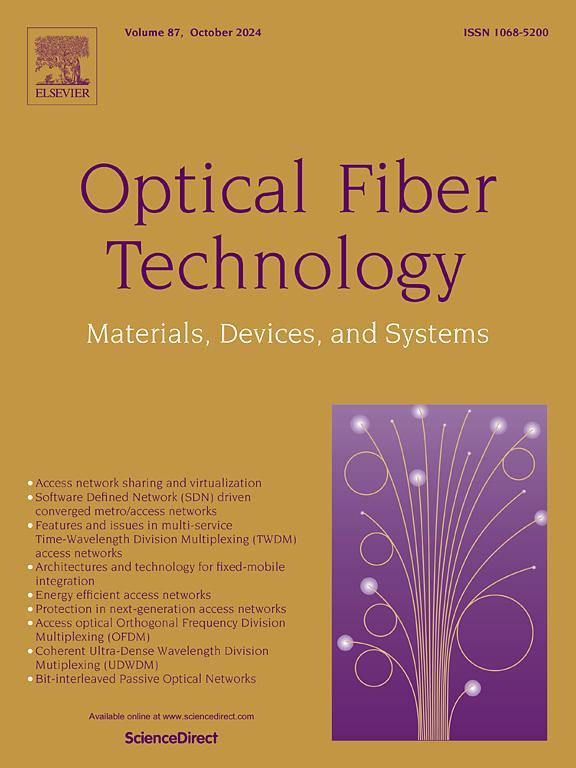Signal-signal beat interference elimination in self-coherent systems enabled by half-symbol-rate receiver
IF 2.7
3区 计算机科学
Q2 ENGINEERING, ELECTRICAL & ELECTRONIC
引用次数: 0
Abstract
Self-coherent transmission systems require only a single-ended photodetector for optical field recovery, dramatically reducing receiver complexity compared to coherent detection systems. Nevertheless, a photodetector with a bandwidth comparable to the symbol rate of the signal is still required in such systems. A real-valued modulation direct detection system based on a half-symbol-rate receiver is a promising solution that reduces the required receiver bandwidth half of the symbol rate. In this paper, we applied a two-stage linearization filter to this system for the first time to suppress signal-signal beat interference(SSBI), and further proposed a three-stage linearization filter algorithm to eliminate SSBI more effectively. The two algorithms were validated in a 28 Gbaud self-coherent system with a half-symbol-rate receiver using four-level pulse amplitude modulation (PAM4). Simulations demonstrated that the two-stage and three-stage linearization filter schemes can achieve approximately 1 dB and 2 dB improvements in OSNR sensitivity at the 7 % HD-FEC threshold for 80 km transmission, compared to the single-stage approach, respectively.
半符号率接收机实现的自相干系统信号拍干扰消除
自相干传输系统只需要一个单端光电探测器进行光场恢复,与相干检测系统相比,大大降低了接收机的复杂性。然而,在这种系统中,仍然需要具有与信号符号速率相当的带宽的光电探测器。基于半码率接收机的实值调制直接检测系统是一种很有前途的解决方案,它可以将所需的接收机带宽降低到码率的一半。本文首次在该系统中采用两级线性化滤波器来抑制信号-信号拍干扰(SSBI),并进一步提出了一种三级线性化滤波器算法来更有效地消除信号-信号拍干扰。在使用四电平脉冲幅度调制(PAM4)的半符号率接收机的28 Gbaud自相干系统中验证了这两种算法。仿真结果表明,在7% HD-FEC阈值下,与单级方法相比,两级和三级线性化滤波器方案在80公里传输时的OSNR灵敏度分别提高了约1 dB和2 dB。
本文章由计算机程序翻译,如有差异,请以英文原文为准。
求助全文
约1分钟内获得全文
求助全文
来源期刊

Optical Fiber Technology
工程技术-电信学
CiteScore
4.80
自引率
11.10%
发文量
327
审稿时长
63 days
期刊介绍:
Innovations in optical fiber technology are revolutionizing world communications. Newly developed fiber amplifiers allow for direct transmission of high-speed signals over transcontinental distances without the need for electronic regeneration. Optical fibers find new applications in data processing. The impact of fiber materials, devices, and systems on communications in the coming decades will create an abundance of primary literature and the need for up-to-date reviews.
Optical Fiber Technology: Materials, Devices, and Systems is a new cutting-edge journal designed to fill a need in this rapidly evolving field for speedy publication of regular length papers. Both theoretical and experimental papers on fiber materials, devices, and system performance evaluation and measurements are eligible, with emphasis on practical applications.
 求助内容:
求助内容: 应助结果提醒方式:
应助结果提醒方式:


